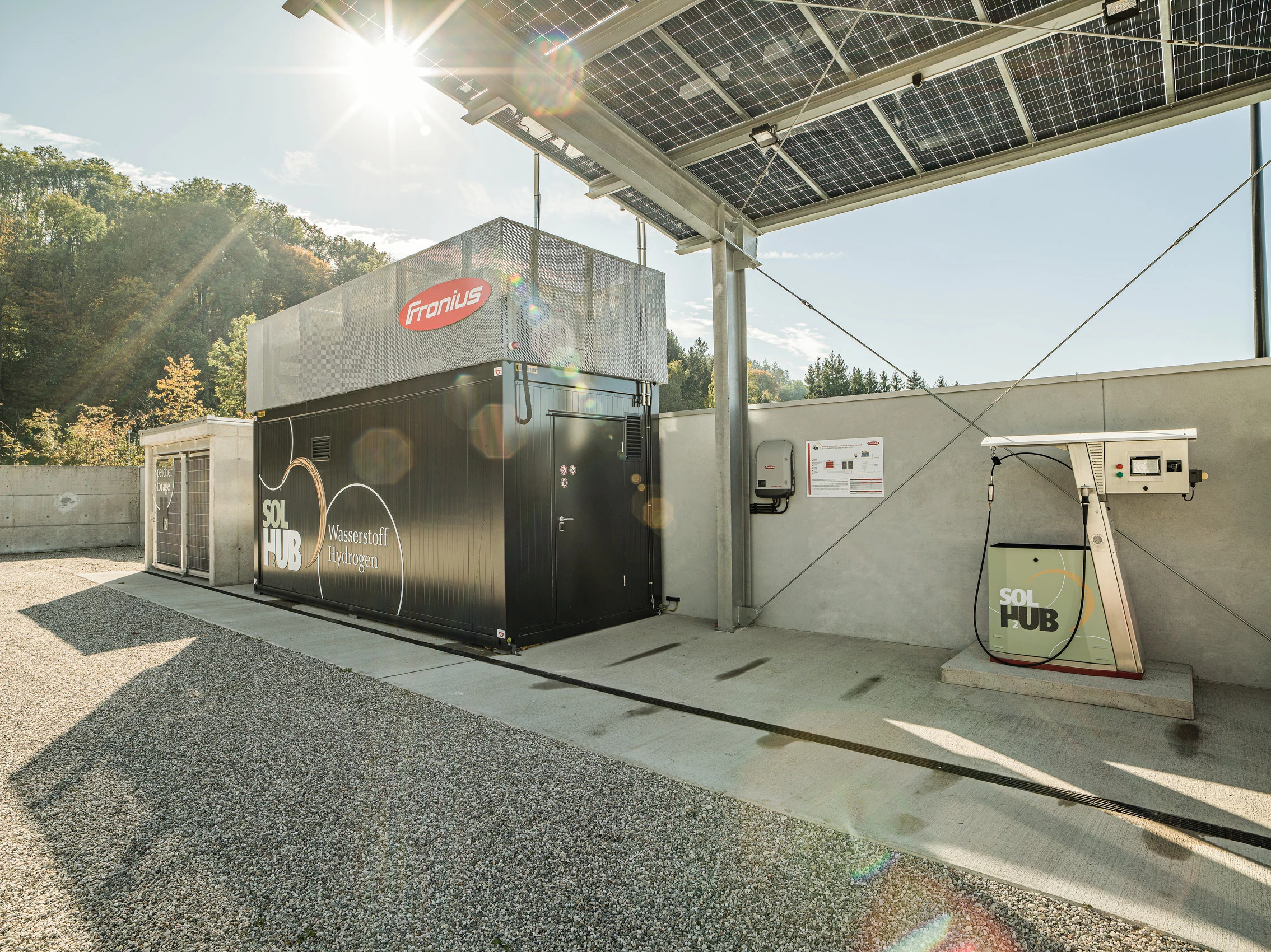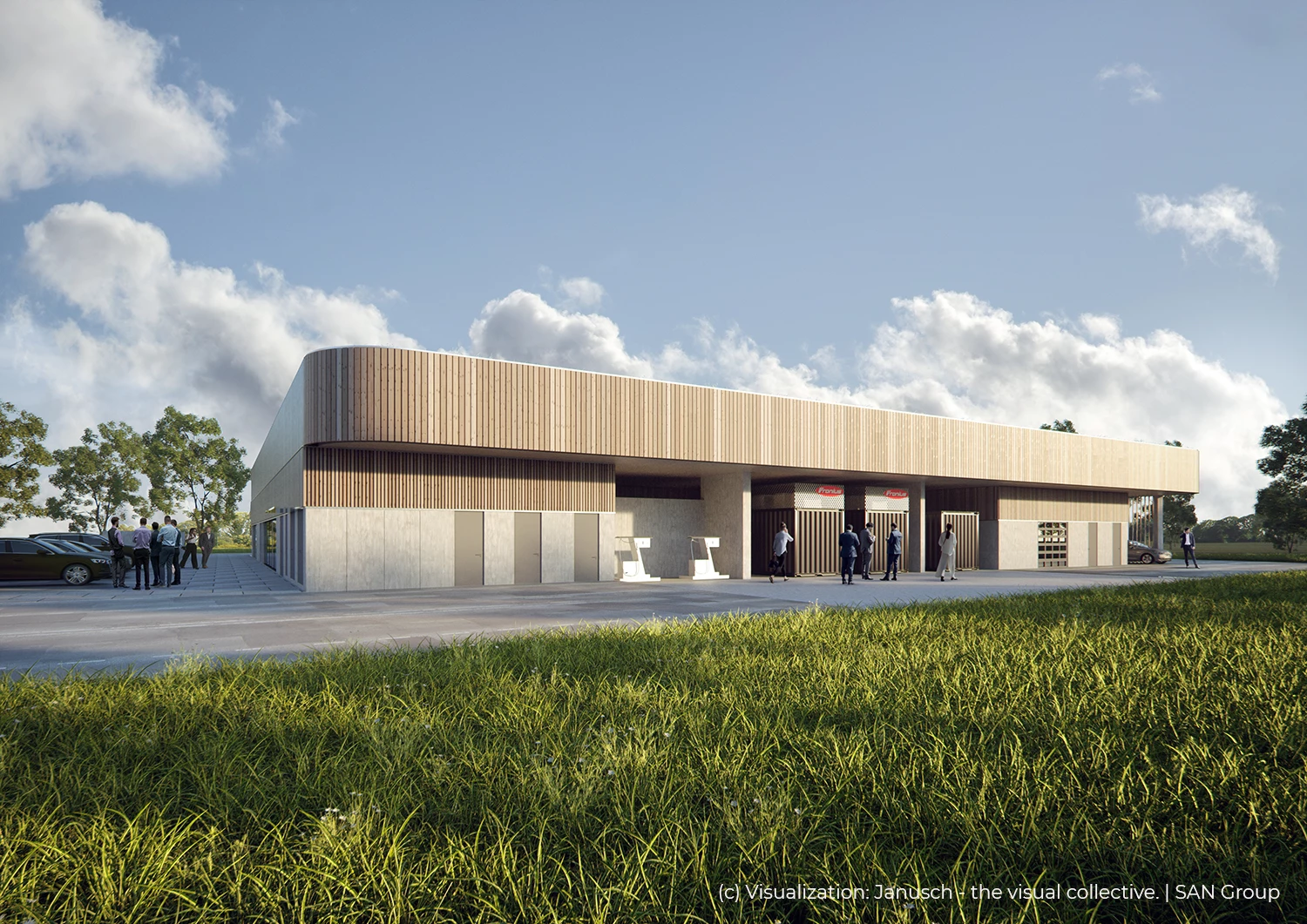Well-respected Austrian solar energy company Fronius has broken ground on its first customer green hydrogen hub, giving us a good look at what it'll take to run a fleet of vehicles on green hydrogen produced entirely on-site using solar panels.
The first Fronius SolHub is under construction as part of SAN Group's new hydrogen facility in Herzogenburg, Lower Austria. Producing an average of around 100 kg of clean hydrogen a day, it'll be used as a filling station for SAN's own hydrogen vehicles. SAN is also working out deals with other companies interested in potentially running their own similar hubs, to use this facility as a demonstrator of sorts.
The aim here is to generate hydrogen fuel in a completely standalone, self-contained and clean fashion, and to do so, the SolHub requires some 1.5 megawatts of photovoltaic panels. That's not a small installation – the average home rooftop system is typically around 3-6 kilowatts, to put things in context. For 1.5 MW of solar, you're looking at some 5,000 or more panels, taking up close to 100,000 square feet (9,000 square meters) of space.

One hundred kilograms of green hydrogen a day will fully fuel around 16 typical fuel cell passenger cars, or power some 1,500 km (930-odd miles) of bus or truck travel.
Fronius is investing quite a bit on hydrogen, and is soon to begin construction on a new "hydrogen competence center" in Steinhaus, where it plans to accelerate R&D as well as production of H2 systems. This first SolHub installation is expected to be complete and commissioned by the spring of 2022.
Source: Fronius







